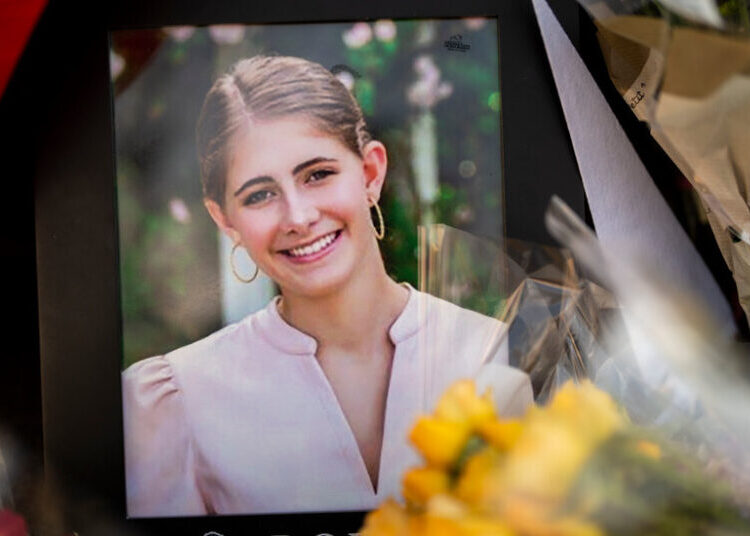Having tested dozens of Thanksgiving recipes and answered dozens more reader questions over the years, I’ve learned there are two holiday dishes that cause more confusion and anxiety than any others: the turkey and the pie. The major stressor seems to be making sure they’re done. Is the turkey at the right temperature? How to avoid the dreaded soggy-bottomed pie?
As someone who isn’t terribly confident about pie crusts either, I get it. And on a major food holiday when time, resources and oven space are limited, it’s only natural for people to ask whether they actually have to parbake or blind-bake the crust, as they have over and over again in our weekly live cooking chats.
For Erin Jeanne McDowell, former Post pie contributor and author of “The Book on Pie,” the answer is a resounding yes (with one major exception below). Why put all that effort into making a pie only to risk cutting into it and finding a doughy, rather than flaky, crust?
An undercooked crust also raises food safety concerns (hence the warnings about raw flour), McDowell says, and takes away one of the best parts of a well-baked dessert. “I love the contrasting texture of pie,” she says, namely the crisp crust that holds a soft or creamy filling. “When the crust is underbaked, it’s just soft on soft.”
If you’d like to avoid that fate and improve your pie crust prowess, here’s what you need to know about parbaking and blind baking.
What are parbaking and blind baking?
Parbaking is exactly what it sounds like: partially baking the crust before any fillings are added. This is a strategy to follow for single-crust pies, the filling of which tends to cook through faster. Pumpkin pie is a primary example this time of year. The parbake gives the crust a head start and ensures both elements finish at the same time.
Double-crust pies can take much longer to cook, reducing the risk of a soggy bottom, so many recipe developers don’t recommend parbaking for the classic apple pie, especially if the filling has been precooked to remove excess moisture.
Blind baking is a step beyond parbaking, meaning the crust is fully baked before the filling is added. This is what you want to do for any pie filled with something that needs no further cooking. That’s the case for such desserts as Chocolate Cream Pie, Banoffee Pie and Coconut Cream Pie With Plantains and Dulce de Leche.
What are the best liners and pie weights for parbaking and blind baking?
There are a variety of options for lining and weighing down the crust to make sure it doesn’t puff up while baking. The weight of what you use is a major consideration.
McDowell, who designed her own silicone “pie beans,” isn’t a fan of ceramic pie weights, as they can be too heavy to easily lift out with a sling of whatever your liner is. (She also doesn’t like the idea of any dust they may shed.) Some people use pennies, but those can also be heavy. In “The Pie and Pastry Bible,” author Rose Levy Beranbaum says she prefers pairing dried beans or rice, which won’t “compact the pastry,” with parchment, which is more breathable than foil. Like cookbook author Stella Parks, McDowell recommends granulated sugar as a pie weight, though it’s better in conjunction with heavy-duty foil for sturdiness.
If you use a parchment liner, be sure to crumple it up first, McDowell says, so it’s easier to press into the pie plate. Or try a large paper basket-style coffee filter. “They’re already the perfect size and shape, and they function just as parchment will, with the bonus that often you’ll already have them on hand and they can be reused,” says King Arthur Baking’s cookbook “Baking School: Lessons and Recipes for Every Baker.”
It’s also important that the pie weights come all the way up the sides of the pan, McDowell says. “You’re not just weighing down the center. … You’re also supporting the sides while they’re baking.” This helps prevent one common baking problem: sides that slump and shrink.
How and when do you dock the pie crust?
Docking, the term for poking holes in a pie crust, also helps keep the pastry from puffing up during baking. McDowell considers it a fail-safe complement to weighing down the crust. McDowell likes to dock the crust as soon as it’s freshly rolled out and pressed into the dish, as the crust is more prone to cracking if pricked after being chilled. Other recipes might instruct you to dock after you pull the pie weights out of the plate and before you finish parbaking or blind baking. (For her very flaky crusts, McDowell will dock a few more times at this point, in addition to the original round.) For especially runny or sticky fillings, Beranbaum recommends poking only halfway through the crust.
A fork is the most accessible tool for docking, though there are specialized tools that create many holes at once by rolling over the crust. King Arthur Baking recommends docking every 1/2 inch to 1 inch, though McDowell is less prescriptive — just remember to dock the sides, too.
How do you parbake and blind-bake?
Look at six different recipes and you might find six different suggestions — varying in time, temperature and more — for how to parbake or blind-bake. That’s okay, McDowell says. “I’m a big believer in there’s not just one way to do things.” Try a few different strategies and pick whichever works best for you. But here’s a quick summary if you’d like to try McDowell’s.
- Refrigerate the (rolled out, docked) pie crust in the plate for 30 to 60 minutes.
- Line the crust with crumpled parchment or heavy-duty foil, ensuring you leave an overhang for easy removal, and fill with your choice of weights.
- Bake at 425 degrees for 15 to 18 minutes. Remove the weights, dock a few more times, and return to the oven for about 5 more minutes, at which point the crust will be parbaked. Look for the crust to be matte and lightened in color; if it’s shiny and darker, it’s not ready. You may see some browning around the edges, but if the base starts to brown, you’re moving into blind baking.
- To blind-bake, keep the crust in the oven for an additional 8 to 10 minutes. Look for the edges around the crimping to be golden brown, with visible browning on the base.
The post Do you need to parbake or blind bake pie crusts? Here’s what to know. appeared first on Washington Post.




